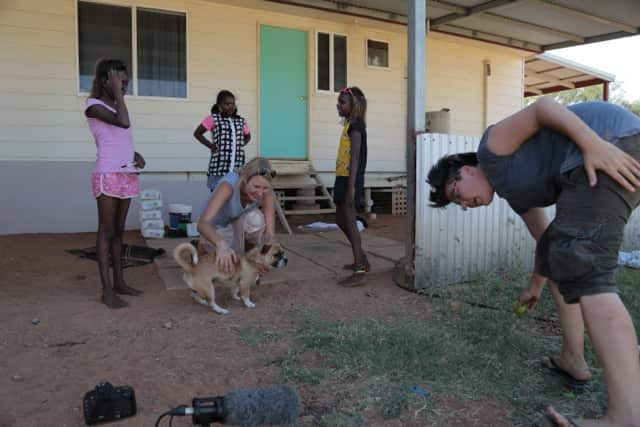The Smashed Film Festival in November showcased 12 films produced by and starring Roebourne’s young Indigenous mob, exploring topics like healthy eating and the importance of culture.
NITV spoke to two members of the team behind the festival to find out more about this deadly project.
NITV: How does film make a difference in communities like Roebourne?
Angela Prior, Project Manager and Mentor at Smashed Films (AP): Film content is the popular media for voices to be heard, especially online. Short films like the SMASHED films contribute to building identity and create a strong digital footprint for a community that is geographically isolated, yet has many important stories and voices to share.
NITV: In this project, what was the relationship between culture and film?
AP: In the early stages of the project, young people identified that strong culture helps to overcome issues associated with alcohol and poor nutrition. The film content was then centered around stories and themes that showcased culture and promoted healthy lifestyle. This creates new and innovative ways to transmit culture.

Source: Photo by Big hART
NITV: What issues are covered in these films?
Laura Harris, Creative Producer, Big hART – Roebourne (LH): Mawarnkarra Health Service, our local AMS, approached Big hART to design a creative project that sparked community discussion about alcohol and nutrition.
That was the main focus but when you open up that conversation, it is linked to all sorts of health issues from peer pressure and drugs, to connection to culture and emotional well-being.
We asked the young people involved to brainstorm about how alcohol and nutrition and related health issues affected their lives, and then we asked them what the positive alternatives are. Overwhelmingly, they all wanted to talk about culture, getting out on country and eating bush tucker.
Overwhelmingly, they all wanted to talk about culture, getting out on country and eating bush tucker.
NITV: How is the project funded?
LH: Mawarnkarra Health funded the majority of the project costs, through their Alcohol and Nutrition Project, which received funding from the Western Australian Government.
We were fortunate that they had a budget that allowed us to run a long-term (four months) process that really engaged the participants in every aspect of the filmmaking and was focused on skill-building. It also provided time and space for them to explore issues that are significant in their lives but they don’t often get to be the lead voice on.
These films are young people painting a picture of how they want their community to be, leading the conversation. It’s that kind of thinking that is really important - that we can’t shift complex issues with quick, one-week programs.
NITV: Is it enough?
LH: The funding was sufficient for this four-month program, but we would love to run this program year-round, providing an outlet for creativity and an opportunity for young people to engage with alternative learning styles and build their digital literacy.
There’s huge potential to use this model to make a suite of films on any number of topics relating to community health and well-being, or to teach language or tell important and invisible stories.
There’s huge potential to use this model to make a suite of films on any number of topics relating to community health and well-being, or to teach language or tell important and invisible stories.
NITV: What has been the hardest part of putting together this festival?
LH: The hardest thing has been balancing the making of the films with the actual event – we had to make the content from scratch, and also hold a community event to celebrate all of the remarkable work that went into the making of the films. It was not just an event but the culmination of a unique youth-arts project.
NITV: What is next for people of Roebourne now that they have made these films?
LH: Next we hope that these films will have a wide reach across the country. There is a lot of talent here in Roebourne and we are looking for ways to share that with a wider audience. We’re also hoping to be able to continue working with these young people and create pathways for them into further education and employment.
NITV: What is next for Big hART?
LH: We are working in partnership with the Ngarluma Yindjibarndi Foundation Limited to run cultural programs and events out of their Ngurin Pilbara Aboriginal Centre, that will cater for both the local community and draw people to explore the Pilbara.
Our next project will be working with community members and elders and involve traditional short form songs known as jawis or tjaabis, finding innovative ways to capture that cultural knowledge and convey it to the next generation using a range of mediums.



